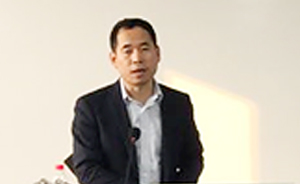Two years’ rapid progress in Xiongan New Area construction
 It has been two years since the establishment of the Xiongan New Area. In the past two years, construction of the area, with a careful pace of construction and a focus on creating “Xiongan quality,” has systematically completed the top-level design and transformed its blueprints into a set of construction drawings and road maps.
It has been two years since the establishment of the Xiongan New Area. In the past two years, construction of the area, with a careful pace of construction and a focus on creating “Xiongan quality,” has systematically completed the top-level design and transformed its blueprints into a set of construction drawings and road maps.
Looking back on the history of urban development since the industrial revolution, Western countries took the lead in initiating the urbanization process. For a period of time, people neglected the traditional Chinese concept of urban management and layout rooted in native agricultural society since ancient times. However, the theory and practice of developed countries have not only failed to overcome their own megacity diseases, but also led some cities in developing countries that once blindly followed Western experience to collapse into insurmountable urban problems. At present, attributed to China’s technological progress and large-scale commitment to the internet economy, mobile payment, virtual reality and other areas, the country’s urban planning and construction capacity has gradually begun to stand at the same starting line with that of the West, even having certain advantages over the West.
It is the urban planning process in which the Xiongan New Area intends to embody Chinese concepts and to provide a Chinese solution for the high-quality development of global cities. Looking back on the planning and construction process over the past two years, the new area has attached unprecedented importance to top-level design. During the two visits that General Secretary of CPC Central Committee Xi Jinping has paid to the new area for field research, he repeatedly demanded that “every inch of land be clearly planned before construction can start.” Throughout the establishment of the Shenzhen New Area, the Pudong New Area and now the Xiongan New Area, the underpinning has been the achievements of China’s reform and opening up. Being the world’s second largest economy, having more than 830 million permanent urban residents, having the world’s leading infrastructure technology and construction capacity, having multidisciplinary professional talent in urban planning and construction, and having the institutional advantage of the ability to concentrate resources for major undertakings—all these factors have made the country more qualified than ever to build a city of the future.
The establishment of the Xiongan New Area extends beyond the concepts of traditional cities in the past. With the characteristics of the times, it is uniquely Chinese. This will be a city that looks to the future and that leads innovation. The new area will create new driving forces centered around innovation and set up a modern industrial system with the coordinated development of real economy, scientific and technological innovation, modern finance and human resources. This city of the future will also make full use of big data, artificial intelligence, the internet of things and other technological means to build itself into both a tangible real city and an intangible digital city.
Xiongan will also be a city of ecological friendliness. It will carry forward the traditional Chinese ecological concept that stresses the unity of man and nature, adopting distinctive Chinese landscape and gardening techniques. It will also integrate green city construction technologies that cover the areas of building, energy, community and more. The Chinese style will be typically reflected in the city’s spatial order, and Chinese civilization is to be embodied in its urban appearance.
This article was edited and translated from Renmin Daily. Liu Baokui is an associate research fellow from the Institute of Land Development and Regional Economy at the Chinese Academy of Macroeconomics.
edited by BEI LE
